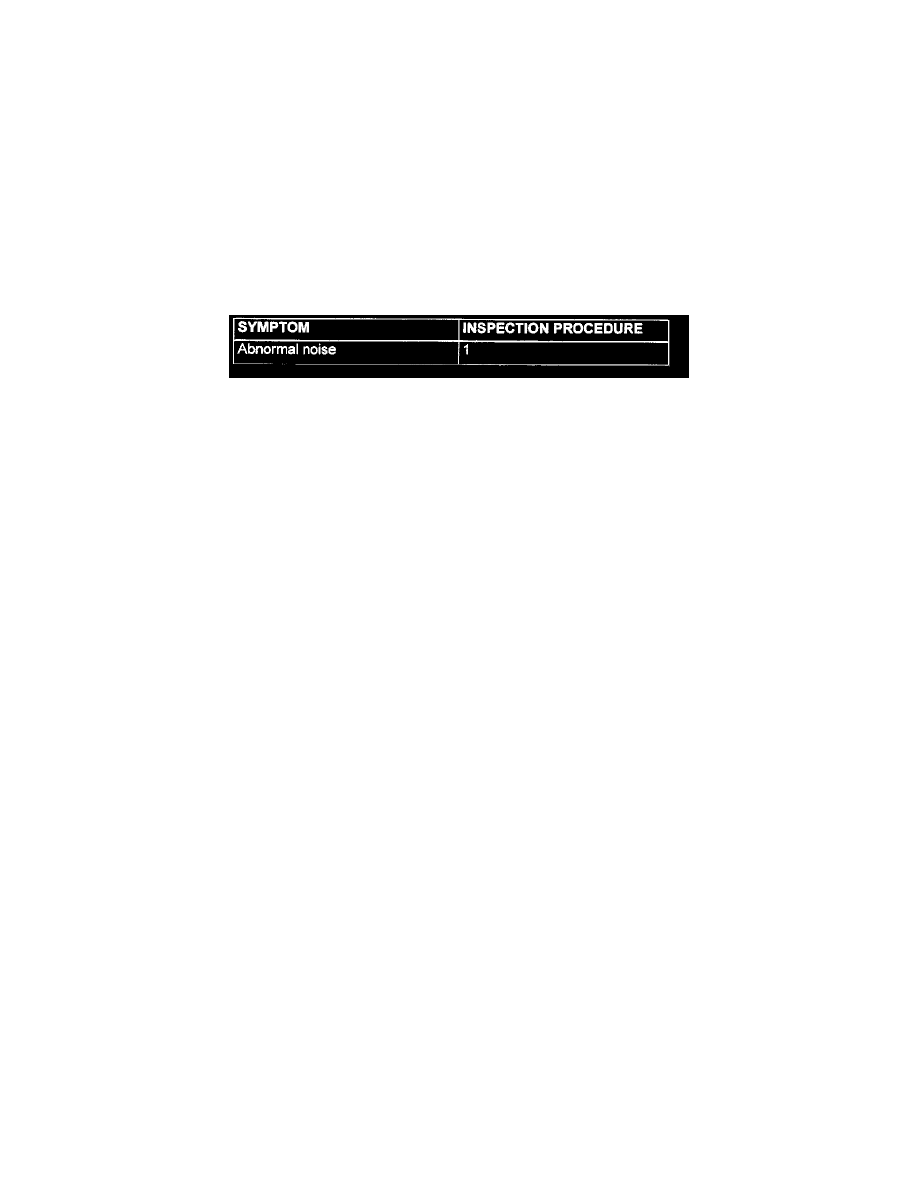Lancer LS L4-2.0L SOHC (2002)

Wheel Hub: Symptom Related Diagnostic Procedures
Introduction
INTRODUCTION
Noise from the rear axle may be caused by defects in the components.
Troubleshooting Strategy
TROUBLESHOOTING STRATEGY
Use these steps to plan your diagnostic strategy. If you follow them carefully, you will be sure that you have exhausted most of the possible ways to
find a rear axle fault.
1. Gather information from the customer.
2. Verify that the condition described by the customer exists.
3. Find the malfunction by following the Inspection Chart for Trouble Symptoms. See: Symptom Chart
4. Verify malfunction is eliminated.
Symptom Procedures
INSPECTION PROCEDURE 1: Abnormal Noise
DIAGNOSIS
STEP 1. Check the wheel nut for looseness.
Q: Are the wheel nuts loosened?
YES: Tighten the nuts, then go to Step 3.
NO: Go to Step 2.
STEP 2. Check the wheel bearing end play.
Q: Is the wheel bearing end play within the limit?
YES: Go to Step 3
NO: Replace the rear hub assembly, then go to Step 4.
STEP 3. Check the rear hub rotary-sliding resistance.
Q: Is the rear hub rotary-sliding resistance within the standard value?
YES: Go to Step 4.
NO: Replace the rear hub assembly, then go to Step 4.
STEP 4. Check trouble symptoms.
Q: Are any noises generated?
YES: Return to Step 1.
NO: This diagnosis is complete.
